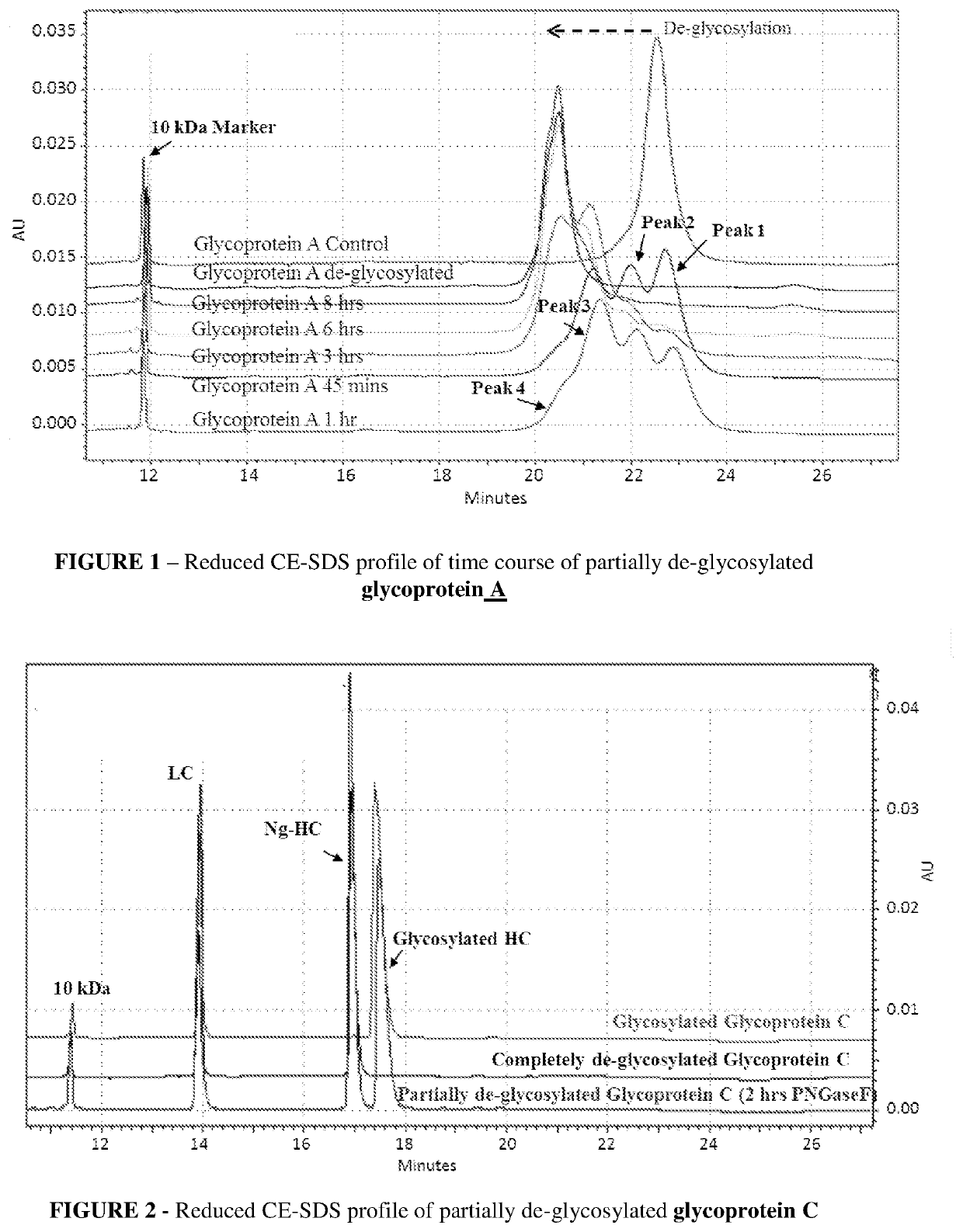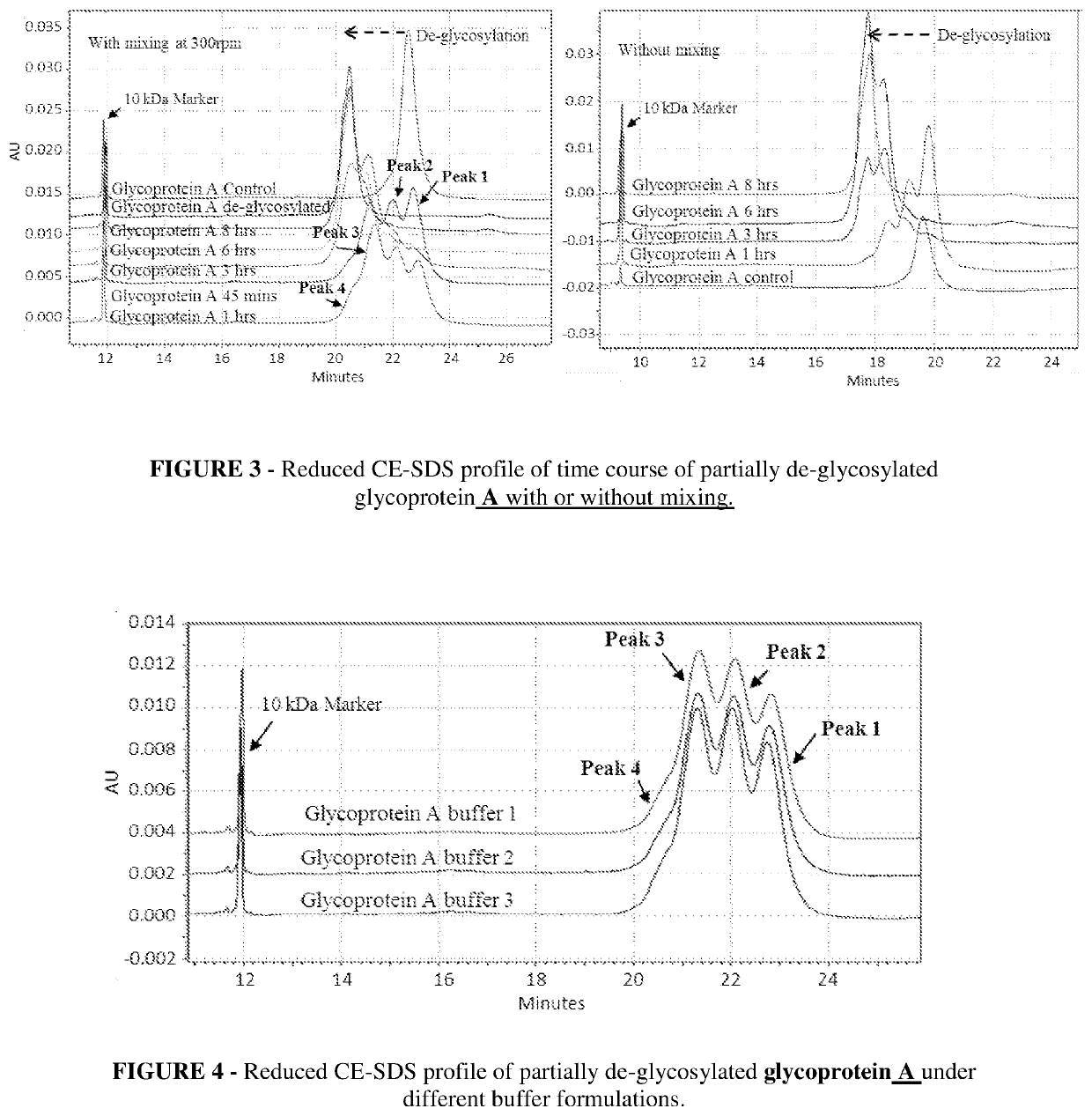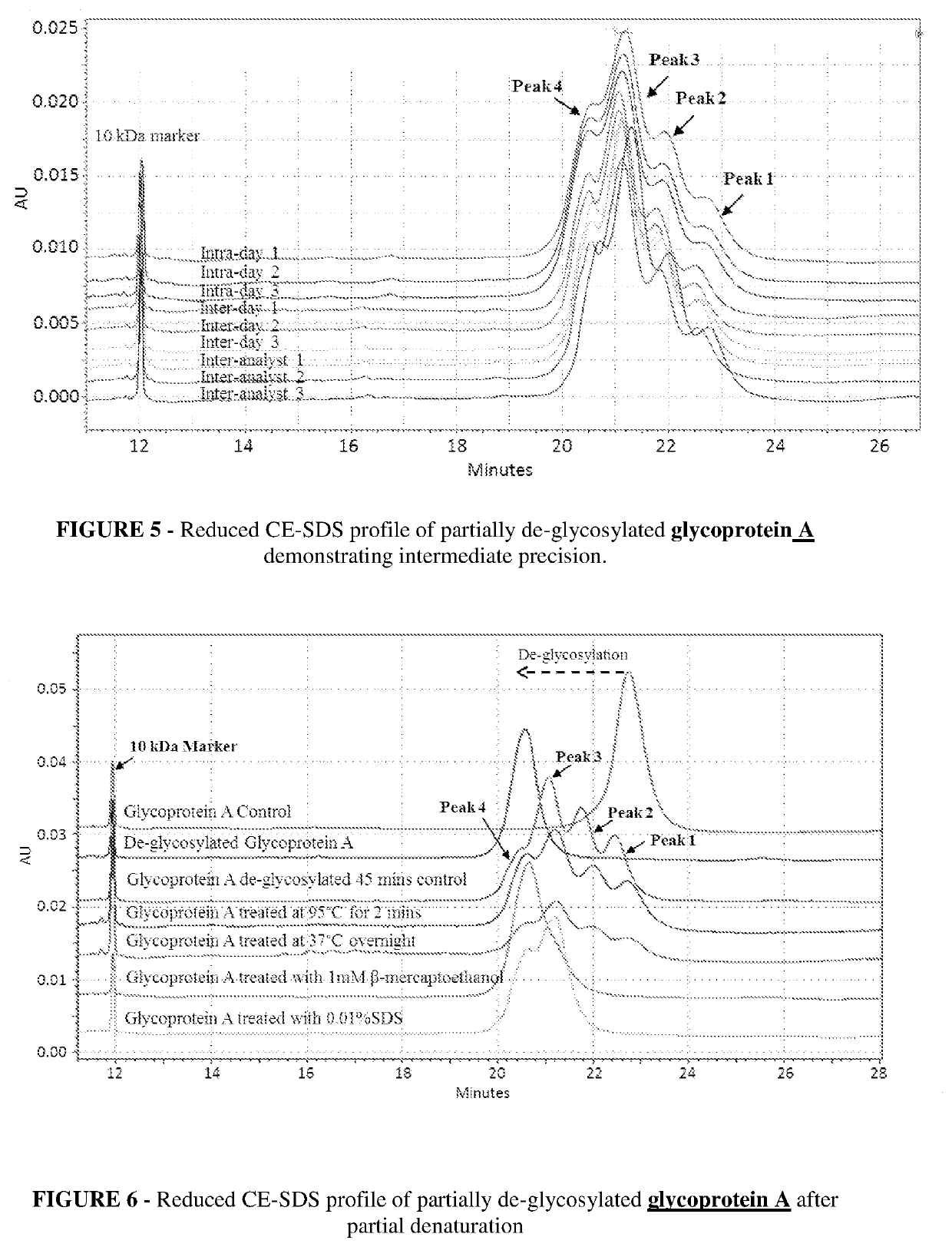Rapid and efficient de-glycosylation of glycoproteins
a glycoprotein and efficient technology, applied in the field of rapid and reliable analytical methods, can solve the problems of extremely difficult mapping of glycoproteins, and achieve the effect of rapid tool for assessing and comparing
- Summary
- Abstract
- Description
- Claims
- Application Information
AI Technical Summary
Benefits of technology
Problems solved by technology
Method used
Image
Examples
example 1
[0083]A time course for de-glycosylation of a multiple glycan site glycoprotein A by PNGaseF under native conditions is illustrated in FIG. 1, which is Reduced CE-SDS profile of partially de-glycosylated glycoprotein A which is a fusion construct of antibody. The reduced CE-SDS profile showed that at different time intervals different sub-populations of glycoprotein are obtained where each consecutive peak correlates directly to de-glycosylation of a distinct glycan site in the protein.
[0084]In FIG. 1 glycoprotein A showed 3 distinct glycan sites (6 in dimeric form), the partial de-glycosylation of which lead to 4 distinct peaks. Peak 1 was completely glycosylated, followed by peak 2 and 3 with one and two sites de-glycosylated respectively. Further peak 4 had all three glycan sites de-glycosylated and was completely de-glycosylated glycoprotein A. As the incubation time for de-glycosylation progressed, the glycan site sub-populations shifted toward complete de-glycosylation (left s...
example 2
[0091]Briefly, anionic detergent SDS (0.4%) and reducing agent β-mercaptoethanol (100 mM) were used for unfolding the protein at 95° C. The protein was then treated with non-ionic detergent Triton X-100 (0.75%) prior to de-glycosylation by PNGaseF to counter the inhibitory effects of SDS. One mM calcium chloride was used in reaction buffer (10 mM Tris-Cl pH 8.0) to stabilize and promote PNGaseF activity. The reaction optimization conditions are detailed in FIG. 8 wherein optimization SDS concentration for complete de-glycosylation of antibody C under denaturing conditions is illustrated. For fixing SDS concentration, the initial de-glycosylation experiments were carried out with 10 U PNGaseF, 130 mM β-Me, 1% Triton X-100 at 37° C. Complete de-glycosylation with 10 U of enzyme in 15 mins was also observed for other Fc glycosylated antibodies (glycoprotein E and F) with present invention method (FIG. 9).
[0092]The novelty of the present method lies in unique combination of the componen...
example 3
[0093]FIG. 10 compares the time course of percentage de-glycosylation of Fc glycosylated antibody glycoprotein B with Roche kit (10 U of Roche enzyme—without denaturants) and with Biocon's method (1 U of Roche enzyme with denaturants). As observed nearly complete de-glycosylation (˜99%) was observed with 10 U of Roche enzyme without denaturation in 16 hrs whereas the similar glycan yield (˜94%) was achieved in 1 min with 1 U of Roche enzyme used in method of present invention.
PUM
| Property | Measurement | Unit |
|---|---|---|
| temperature | aaaaa | aaaaa |
| temperature | aaaaa | aaaaa |
| incubation time | aaaaa | aaaaa |
Abstract
Description
Claims
Application Information
 Login to View More
Login to View More - R&D
- Intellectual Property
- Life Sciences
- Materials
- Tech Scout
- Unparalleled Data Quality
- Higher Quality Content
- 60% Fewer Hallucinations
Browse by: Latest US Patents, China's latest patents, Technical Efficacy Thesaurus, Application Domain, Technology Topic, Popular Technical Reports.
© 2025 PatSnap. All rights reserved.Legal|Privacy policy|Modern Slavery Act Transparency Statement|Sitemap|About US| Contact US: help@patsnap.com



